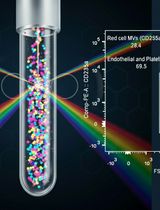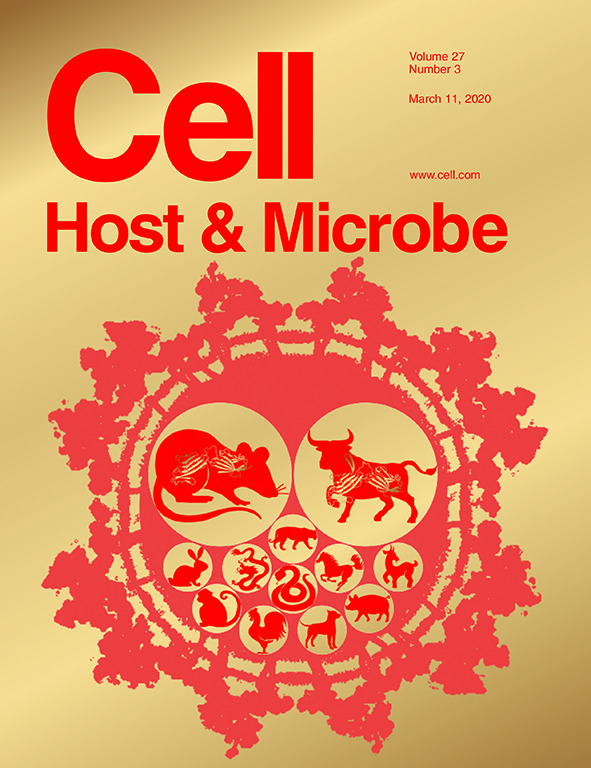- EN - English
- CN - 中文
Analyzing the Quenchable Iron Pool in Murine Macrophages by Flow Cytometry
小鼠巨噬细胞可淬灭铁池的流式细胞分析
发布: 2020年03月20日第10卷第6期 DOI: 10.21769/BioProtoc.3552 浏览次数: 6162
评审: Gal HaimovichVasiliki KoliarakiAnonymous reviewer(s)

相关实验方案

研究免疫调控血管功能的新实验方法:小鼠主动脉与T淋巴细胞或巨噬细胞的共培养
Taylor C. Kress [...] Eric J. Belin de Chantemèle
2025年09月05日 3444 阅读

外周血中细胞外囊泡的分离与分析方法:红细胞、内皮细胞及血小板来源的细胞外囊泡
Bhawani Yasassri Alvitigala [...] Lallindra Viranjan Gooneratne
2025年11月05日 1326 阅读
Abstract
Tissue-resident macrophages are pivotal for a tightly-regulated iron metabolism at a cellular and systemic level, since subtle iron alterations increase the susceptibility for microbial infections or drive multiple diseases. However, research on cellular iron homeostasis in macrophages remains challenging due to the limited amount of available methods using radioactive 59Fe isotopes or strong iron chelators, which might be inapplicable in certain experimental settings. This protocol describes the analysis of the quenchable iron pool (QIP) in macrophages by loading these cells with exogenous iron-complexes. Thereby, the cytoplasmic iron pool can be determined, since the iron uptake ability of macrophages inversely correlates with intracellular iron levels. Thus, this assay enables the accurate analysis of even minor alterations in cytoplasmic iron fluxes and is applicable in almost every laboratory environment. In addition, the protocol can also be adopted for other immune cell types in vitro and in vivo.
Keywords: Quenchable iron pool (淬火铁池)Background
Owing to their central regulatory functions for systemic iron metabolism, macrophages in multiple tissues swiftly alter their intracellular iron levels upon encounter of diverse stimuli during microbial infections and diseases (Nairz et al., 2017). Of note, the majority of cellular iron ions is bound by the major iron storage protein Ferritin within the cytoplasm or is localized to compartments like mitochondria or lysosomes (Ma et al., 2015; Soares and Hamza, 2016). However, the labile iron pool represents an unbound fraction of cytoplasmic iron, which is metabolically accessible and pivotal for cellular iron homeostasis and metabolism (Cabantchik, 2014). Interestingly, subtle concentration changes within this macrophage iron pool can greatly impact the outcome of infections, especially with intracellular pathogens (Ganz and Nemeth, 2015).
However, these intracellular iron fluxes in the nanomolar to millimolar range are highly dynamic and are additionally regulated in a spatiotemporal manner, providing a significant challenge for accurate experimental quantification (Cabantchik, 2014; Ma et al., 2015). Methods for iron import/export studies, using radioactive 59Fe isotopes, are highly sensitive and specific, but are quite limited in their application for the broad interested scientific community owing to safety issues and governmental regulations. Further, quantification of chelated iron by spectroscopy is hampered by either physical cell disruption, low sensitivity or the large amounts of required biological materials.
To address these experimental challenges, Epsztejn et al. described a Calcein-AM-based method to analyze the labile iron pool (Epsztejn et al., 1997). When Calcein-AM is taken up by metabolically active cells, this acetoxy-methyl-ester is cleaved by intracellular esterases, releasing the iron-specific fluorescent dye Calcein exclusively into the cytoplasm (Ma et al., 2015). Thereby, Calcein fluorescence is quenched upon binding to cytoplasmic iron ions (Figure 1). Further, this method was refined for analysis by flow cytometry (Prus and Fibach, 2008). In general, these protocols rely on the usage of strong iron chelators to sequester cytoplasmic iron ions for subsequent Calcein fluorescence rescue. However, some iron chelators are commercially unavailable (e.g., salicylaldehyde isonicotinoyl hydrazone = SIH) or can have diminished chelating effects under specific experimental conditions.
Figure 1. Quenching of cellular Calcein fluorescence upon binding of iron ions. Calcein fluoresces in the unbound state but gets quenched during binding by accessible iron ions within the cytoplasm. Addition of exogenous iron upon treatment with FeCl2/8-hydroxyquinoline (FeHQ) complexes further quenches Calcein fluorescence.
Thus, in order to increase practical applicability, this Calcein-AM-based assay was modified by analyzing the quenchable iron pool (QIP) instead (Du et al., 2015; Siegert et al., 2015). Since Calcein shows reduced fluorescence in the iron-bound state, its fluorescence gets additionally quenched when exogenous iron is swiftly delivered into the cytoplasm by the addition of a FeCl2/8-hydroxyquinoline (FeHQ) complex (Figure 1) (Prachayasittikul et al., 2013; Ma et al., 2015; Chobot et al., 2018). Hence, the difference in cellular Calcein fluorescence before and after FeHQ addition represents the QIP (Figure 2A). Of note, the size of the unbound, cytoplasmic iron pool inversely correlates with the ability of a given cell to take up iron ions. Thus, iron-starved cells can substantially take up more exogenous Fe (upon FeHQ addition) than iron-saturated cells (Figure 2B). Therefore, cells with minor cytoplasmic iron pools exhibit higher QIPs when compared to iron-loaded cells with reduced QIPs (Figure 2A).
In conclusion, QIP analysis by flow cytometry represents a powerful tool to accurately determine alterations in cytoplasmic iron levels upon diverse cellular stimuli. Further, this protocol can be established easily in almost every laboratory environment and can also be applied for the investigation of iron homeostasis in other immune cell types in vitro and in vivo.
Figure 2. Theoretical concept of QIP analysis. A. Schematic representation of QIP calculation. Primary bone marrow-derived macrophages (BMDMs) were left untreated or treated with 50 μM FeSO4 for 17 h and the MFI (Calcein) was determined in naive and FeHQ-challenged BMDMs. The QIP at the respective condition is calculated as the MFI difference. B. The cytoplasmic levels of unbound iron inversely correlate with the cellular iron uptake ability. Thus, cells with low cytoplasmic iron levels can take up more exogenous iron (upon FeHQ treatment), than already iron-saturated cells. MFI, median fluorescence intensity.
Materials and Reagents
- Pipette tips
- 1.5 ml reaction tubes
- 50 ml conical centrifuge tubes (Starlab, catalog number: E1450-0200 )
- 15 ml conical centrifuge tubes (Starlab, catalog number: E1415-0200 )
- Tissue papers (Tork, catalog number: 290163 )
- 5 ml serological pipettes (Starlab, catalog number: E4860-0005 )
- 10 ml serological pipettes (Starlab, catalog number: E4860-0010 )
- 5 ml round-bottom FACS tubes, for example FalconTM Round-Bottom Polystyrene Tubes (Thermo Fisher Scientific, FalconTM, catalog number: 352054 )
- 6-well CytoOne® Plates, tissue culture-treated (Starlab, catalog number: CC7682-7506 )
- 24-well CytoOne® Plates, tissue culture-treated (Starlab, catalog number: CC7682-7524 )
- 10 cm round CytoOne® Dish, tissue culture-treated (Starlab, catalog number CC7682-3394 )
- T-150 CytoOne® Flask, tissue culture-treated, vented (Starlab, catalog number: CC7682-4815 )
- Thermo ScientificTM SterilinTM 100 mm Square Petri Dishes (Thermo Fisher Scientific, Thermo ScientificTM, catalog number: 11349273 )
- Natural-rubber scraper (Deutsch & Neumann, catalog number: 2260001 )
- Rapid-FlowTM sterile disposable filter unit with cellulose nitrate-membrane: 0.2 μm pore size (Thermo ScientificTM, NalgeneTM, catalog number: 10261741 )
- Primary bone marrow-derived macrophages (BMDMs) from C57BL/6J mice: For BMDM cultivation in general, please refer to Bourgeois et al., 2009
- L929 cell line (ATCC, catalog number: CCL-1 )
- Purified anti-mouse CD16/32 antibody (BioLegend, catalog number: 101302 )
- FITC anti-mouse/human CD11b antibody (BioLegend, catalog number: 101205 )
- PE anti-mouse F4/80 antibody (BioLegend, catalog number: 123110 )
- Ultra-pure, high quality water, suitable for trace metal analysis (Sigma-Aldrich, catalog number: 14211 )
- DMEM (Thermo Fisher Scientific, GibcoTM, catalog number: 11584486 )
- Fetal calf serum (FCS) (Sigma-Aldrich, catalog number: F7524 )
- Penicillin/Streptomycin (Sigma-Aldrich, catalog number: P4333 )
- Phosphate-buffered saline (PBS), Ca2+ and Mg2+ free, liquid (Sigma-Aldrich, catalog number: D8537 )
- FeCl2∙4H2O (Sigma-Aldrich, catalog number: 220299 )
- 8-hydroxyquinoline (Sigma-Aldrich, catalog number: H6878 )
- Calcein-AM (BioLegend, catalog number: 425201 )
- Dimethyl sulfoxide (DMSO) (Sigma-Aldrich, catalog number: D2438 )
- Trypsin solution 10x (Sigma-Aldrich, catalog number: 59427C )
- EDTA disodium salt dihydrate (AppliChem, catalog number: 131669.1211 )
- Bovine serum albumin (BSA) (Sigma-Aldrich, catalog number: A2153 )
- Complete DMEM (see Recipes)
- L929-conditioned medium (see Recipes)
- BMDM medium (see Recipes)
- Stock solution preparation of Calcein-AM, FeCl2 and 8-hydroxyquinoline (see Recipes)
- Calcein-AM staining solution (see Recipes)
- FeHQ solution (see Recipes)
- Trypsin solution (see Recipes)
- FACS buffer (see Recipes)
Equipment
- Pipettes, for example Pipetman model (Gilson)
- Motorized single-channel pipette (Gilson, Pipetman® Concept 100-1,200 μl)
- Combined orbital linear shaking water bath (Grant Instruments, model: OLS200 )
- Laminar flow hood suitable for cell culture, for example Microbiological Safety Cabinets (Szabo-Scandic, SafeFAST Premium 212)
- CO2-incubator (Binder, model: CB 170 )
- Automated cell counter, for example CASY cell counter & analyzer (Roche, model: TTC-2KA-2037 )
- Refrigerated centrifuge (Hettich, model: Rotina 38R )
- Refrigerated bench top centrifuge (Peqlab, PerfectSpin 24R Refrigerated Microcentrifuge)
- Flow cytometer equipped with appropriate lasers and filters for the detection of Calcein fluorescence, for example BD LSRFortessaTM (BD Biosciences)
Software
- BD FACSDiva Software (BD Biosciences, Version: 8.0.1)
- FlowJo Software (FlowJo, Version: 7.6.5)
Procedure
文章信息
版权信息
© 2020 The Authors; exclusive licensee Bio-protocol LLC.
如何引用
Riedelberger, M. and Kuchler, K. (2020). Analyzing the Quenchable Iron Pool in Murine Macrophages by Flow Cytometry. Bio-protocol 10(6): e3552. DOI: 10.21769/BioProtoc.3552.
分类
免疫学 > 免疫细胞功能 > 巨噬细胞
细胞生物学 > 基于细胞的分析方法 > 离子分析
细胞生物学 > 基于细胞的分析方法 > 流式细胞术
您对这篇实验方法有问题吗?
在此处发布您的问题,我们将邀请本文作者来回答。同时,我们会将您的问题发布到Bio-protocol Exchange,以便寻求社区成员的帮助。
Share
Bluesky
X
Copy link












